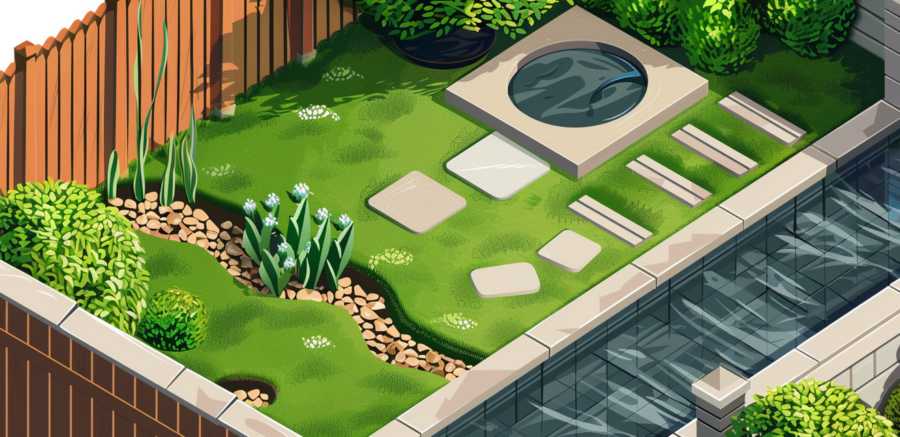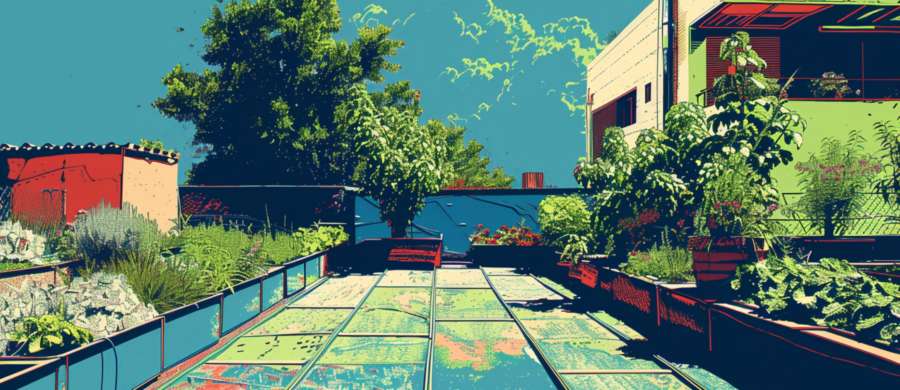Waterlogged gardens are more than an aesthetic inconvenience. They wreck grass, attract midges, rot timber, and turn paved areas into algae-covered slip hazards. Thankfully, fixing drainage doesn’t have to mean tearing the garden apart or taking a course in civil engineering.
The Slow-Soak Clue Hunt
Not every drainage issue starts with a lake. Some begin subtly: a patch of lawn that always seems wetter than the rest. Paving that stays damp long after the sun comes out. A telltale line of moss where the fence meets the soil.These are your warnings. Left alone, they escalate. Eventually, roots suffocate from lack of oxygen, fences warp and rot, and topsoil erodes into sad, soggy craters. Start with a simple garden walkabout a day or two after heavy rain and look for:
- Areas where water pools for more than 24 hours
- Soil that’s constantly soft or spongey even in dry spells
- Unusual plant die-off in one specific area
French Drains vs. Soakaway Pits
Now for the solutions—two of the most effective being the French drain and the soakaway pit. They sound fancy, but they’re refreshingly straightforward when used properly.A **French drain** is essentially a gravel trench with a perforated pipe running through it. Water flows into the trench, through the pipe, and away from wherever it was causing trouble. Ideal for:
- Redirecting water away from buildings or patios
- Drying out consistently wet strips along fences
- Channelling surface water off sloped lawns
- Flat gardens with no easy run-off point
- Handling roof runoff or overflow from water butts
- Fixing isolated pooling in a single area
When Next Door Becomes Part of the Problem
You’ve built your soakaway, installed a French drain, and still your garden feels like it’s hosting a low-budget wetlands documentary. It might be time to look sideways—literally. Neighbouring properties can unknowingly contribute to your drainage issues, especially if their driveways, patios, or rooflines direct water your way.Newer driveways often use impermeable surfaces like resin-bound stone or concrete. If they lack proper edge drainage or run-off channels, that water has to go somewhere—usually downhill and onto your flowerbeds.
Before marching next door with a ruler and a grudge, try observing during rainfall. See how water behaves across property lines. Document it if needed. And yes, a tactful conversation is possible—one that doesn’t start with accusations but ends with collaborative drainage planning or minor landscaping tweaks. Sometimes, a simple border trench or deflection barrier solves it.
Surface Matters
What your garden is made of influences how it drains. Lawns compact over time, especially if walked on regularly or mowed when wet. Clay-heavy soils naturally resist water. Decorative gravel traps moisture if laid too thick without a proper base.To improve surface-level drainage:
- Aerate lawns annually—manually or with a hollow tine tool
- Add organic matter to clay soils to loosen them up
- Ensure gravel areas have a compacted, free-draining sub-base
Drying with Style
Drainage doesn’t have to be ugly. With the right approach, it can become a feature. A shallow gravel channel can double as a decorative border. Stepping stones across a low patch can disguise a drain field. Even raised beds, properly lined and filled, can redirect moisture from sodden zones.Good drainage work should look intentional—not like the aftermath of a failed trench warfare re-enactment.
Soggy No More
Water doesn’t care about your planting scheme, patio layout, or weekend plans. Left unmanaged, it spreads where it likes, quietly undoing your hard work. But with a little effort, some honest garden forensics, and a spade or two of problem-solving, you can turn soggy ground into stable footing.When it rains, your garden shouldn’t panic. It should breathe—and dry out like it’s supposed to. Let your ducks find water elsewhere.
Article kindly provided by citycentremaintenancemcr.co.uk


